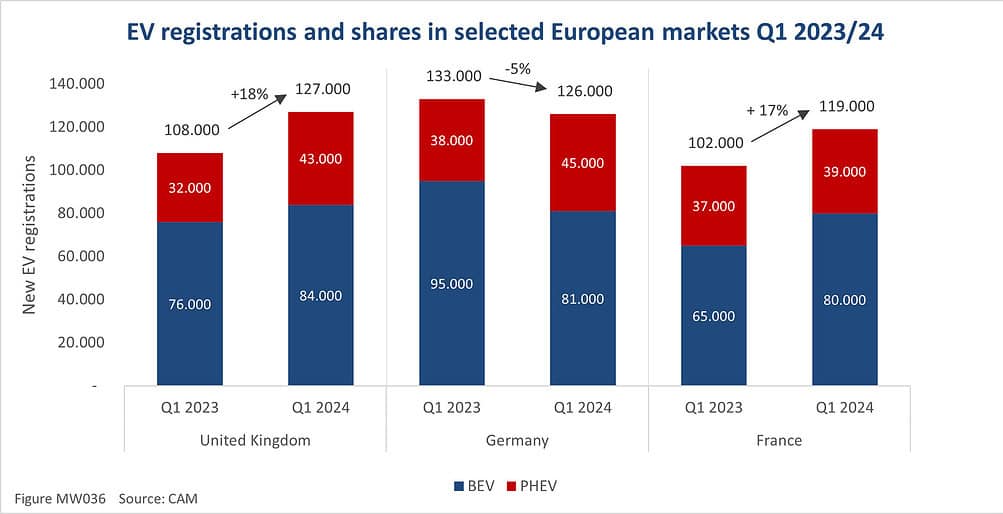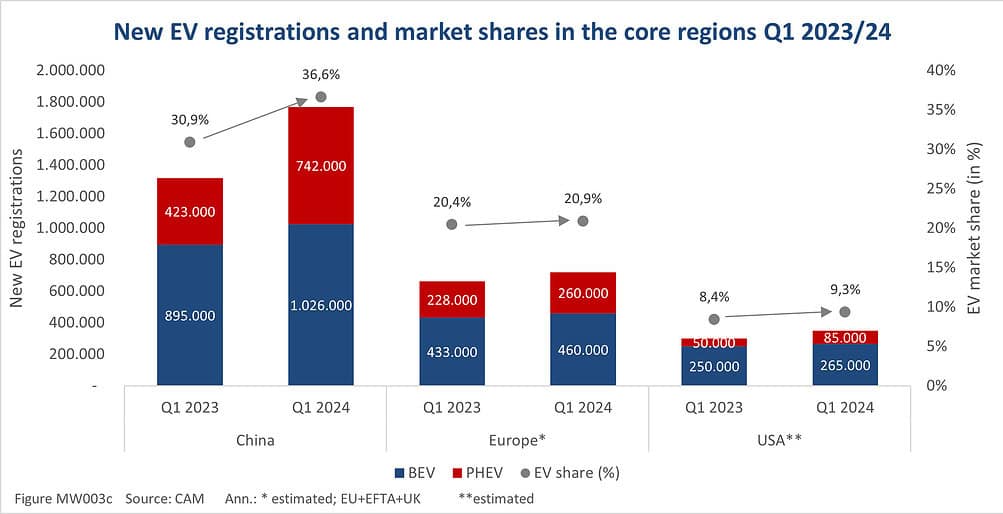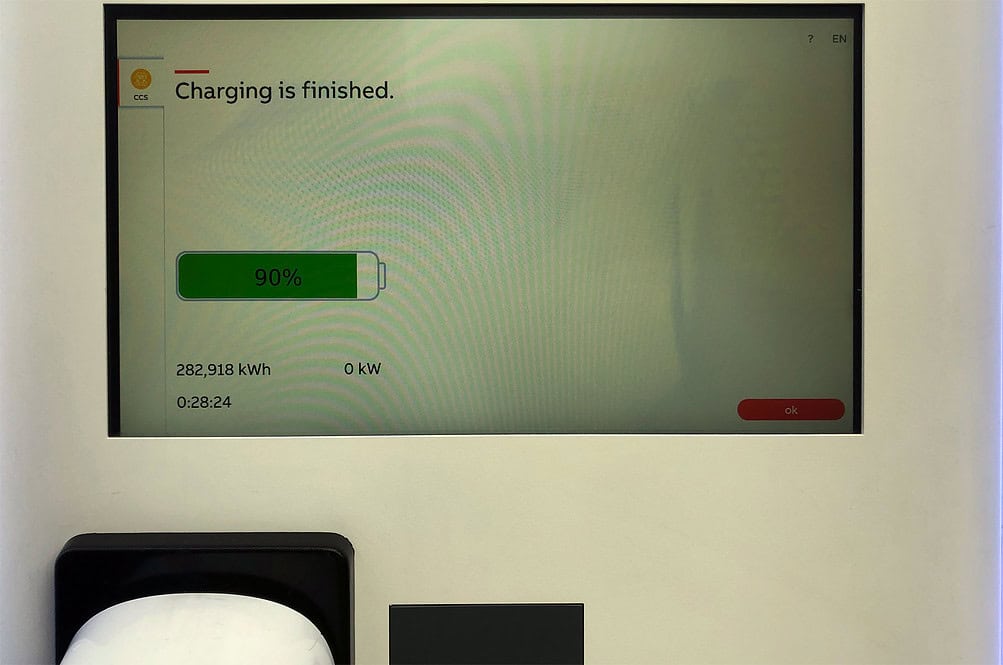Copyright © InnovOrigins 2023
Europe is an important market for electromobility. Tesla sells many vehicles here – and is the market leader, not least because of its “ecosystem”.
However, the first quarter of 2024 showed that the parameters are currently shifting. In some key European markets, e-mobility is losing market share, in favor of hybrids and combustion engines. The market share of electrified vehicles across Europe almost stagnated – it rose from 20.4% to 20.9%, while the number of electric vehicles sold rose from 433,000 to 460,000 units.
China is a completely different story – the country remains the biggest driver of the electric car market. Total sales of electrified vehicles grew by 31% in the first quarter.
Germany falls behind the UK
Thanks to clever subsidy policies and strong support in the press and media, the German market had been the most important European market alongside Norway. This has changed since the first quarter of 2024. Triggered by German fiscal policy, all environmental bonuses have been cut, including for electric buses and trucks. Funding for public charging stations has also been cut.
This already hurt registrations in the first three months. Even OEM subsidies to remove the now harder-to-sell electric vehicles from the production line could not prevent the slump.
Although sales of “electrified” vehicles (BEV, PHEV) only fell by 5%, this was due to increased PHEV registrations. BEV registrations fell by around -15%.
The situation was quite different in the UK, where growth of +18% was recorded. Both BEVs and PHEVs made impressive gains, which meant that the UK left the previous leading German market behind.
Tesla, currently under pressure on sales anyway, announced a 10% reduction in jobs worldwide in order to cut costs – in Grünheide the percentage is set to rise even further.
Where is the positive momentum?
In recent weeks, MAN Truck & Bus and Mercedes-Benz Trucks have presented MegaCharging for their planned electric trucks. MegaCharging refers to charging capacities between 700 and more than 1,000 kW.
But here too, doubts are growing among those who pay attention to physics. If the electrification of heavy goods transport is to succeed, the framework conditions must be right. MegaCharging requires amperages that are difficult to achieve at freeway service areas in Germany – the grids are not only lagging behind here. Moreover, just one charging point per service area is not enough.
Germany’s deficits are becoming ever clearer
In other words, Germany’s deficits will become even more apparent in the coming months.
Only one premium OEM among the winners
What is piquant, however, is the shift in sales. While VW & Co lost ground in the first quarter, BMW was the only premium supplier to record successes. The Munich-based company can look back on a record quarter, with growth in electric car sales amounting to a whopping 83%.
First and foremost, the weakness of the electric car market in Germany only shows one thing: the influence of the environmental bonuses and not least the economic uncertainties, which are homemade in Germany, was clearly underestimated by the electric fan bubble.
At the moment, it looks as if the electric skeptics were right. Right from the outset, they said that electric vehicles could be slow sellers without subsidies.
Source




© The Content Exchange, source News







